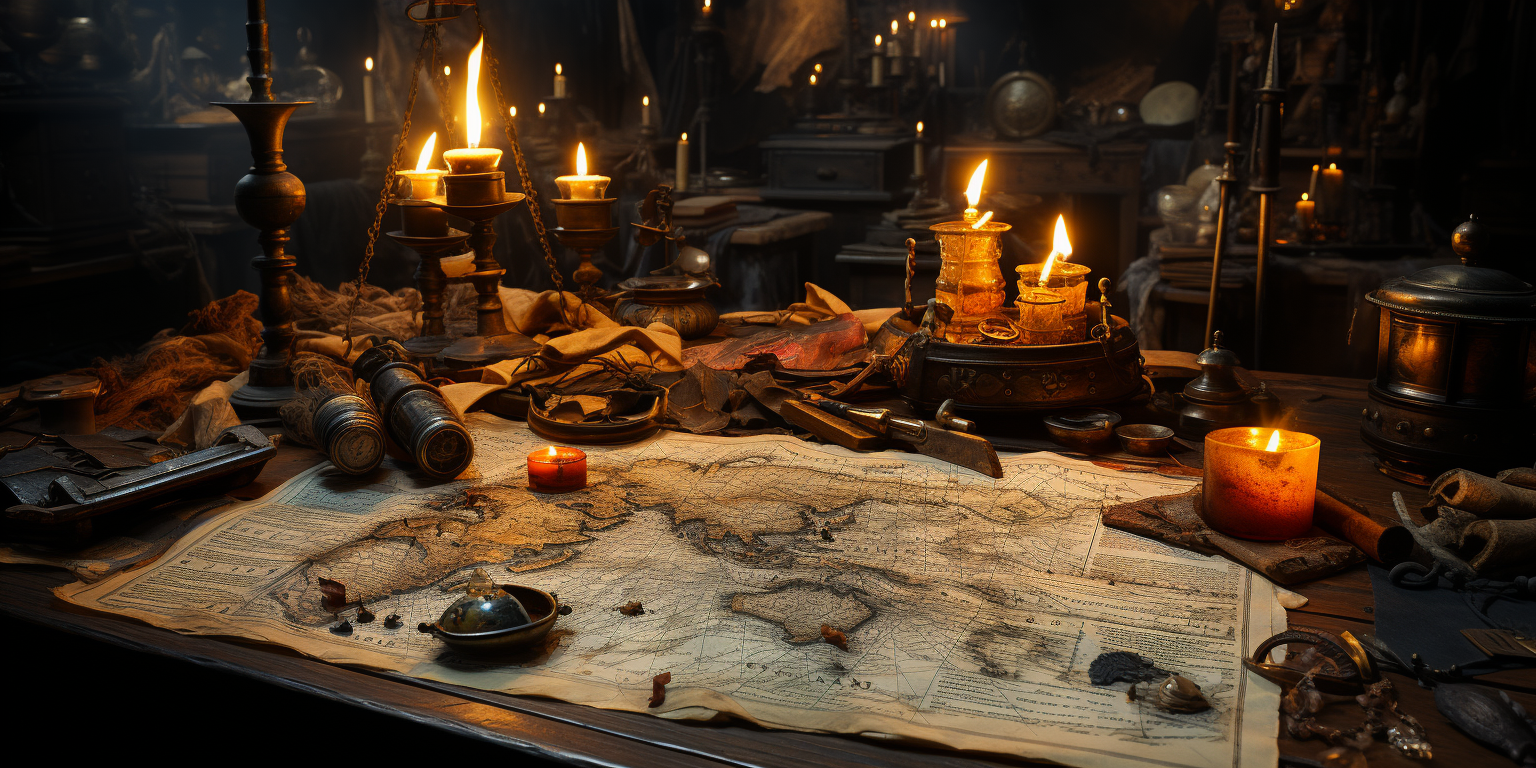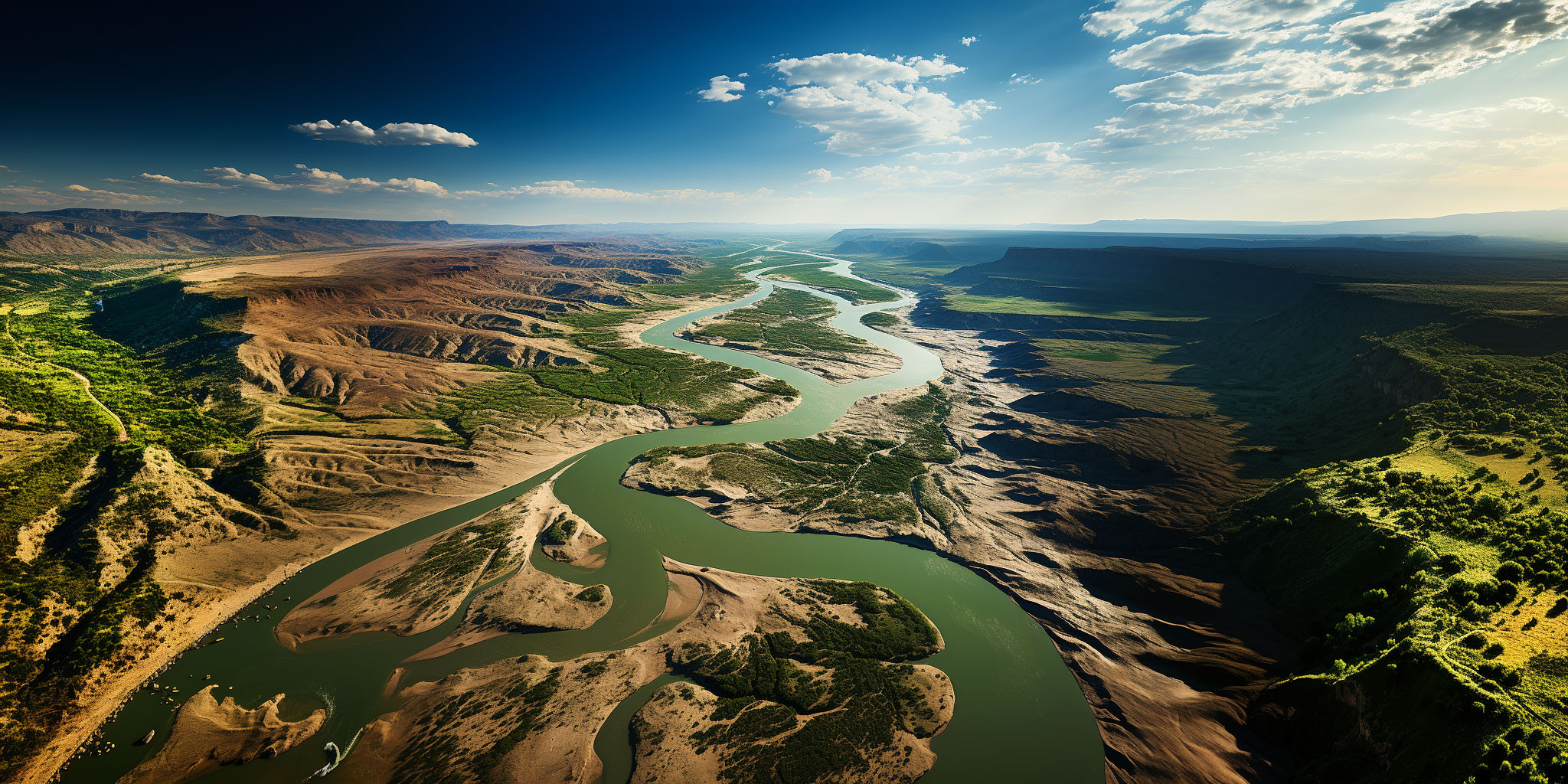The Bara Kusini
A vast desert region encompassing almost 5 million square Kilometers and stretching from the Tajiri Mountains in the West to the Mchanga Hasira - The Twin Seas Coast in the east.
The Bara Kusini is characterized by its hot and dry climate, with temperatures ranging from below zero to 125 degrees F in a single 30 hour day. The landscape is dominated by sand dunes, rocky outcroppings, and sparse vegetation. Despite its harsh conditions, the desert is home to a variety of hardy species, including at least 175 magical animals of Thaumaturgic interest, many of which are endangered due to overharvesting.

- Bachal
- Mdaj Bahuft
- Kuogopa - the Petrified City
- Kuogopa Archeological Project
- Il-Wāāt ul'Ihāt Kathira
- Visiwa vya Shungwe la Hasira Pwani
- Mdimo il Rojo
- Eumlat Masruqa
- Nephisis
- Il'Bisothi Hurar
- The Mchanga Pwanii - Coastal People of Mchanga Hasira
- The Qāāzami - The Desert Tribes
- Dasar Laut - The Seaborn
- Kawaida
- Saahil Kalima
- Chumvi - "Salt" Language of the Dasar Luat
- Qāāzana'i Kalima
- Lugha ya Mbao
Northern Mchanga Hasira: Bachal to Il-Wāāt ul'Ihāt Kathira
Regions of the Bara Kusini
The Bara Kusini is a sprawling desert region covering almost 5 million square kilometers, divided into three unique regions. The landscape is a beautiful, ruthless canvas painted with towering sand dunes, craggy outcroppings, and sparse, hardy vegetation. Temperatures swing wildly from freezing cold to a blistering 125 degrees F within the span of a single 30-hour day.
The northernmost area, Jangwa la Vumbi la Mifupa, is geologically active and significantly hotter. Its terrain is jagged and volatile, punctuated by the rare oasis and home to hardy creatures of magic, whose existence is a testament to life's tenacity in such austere conditions.
To the south lies Mchanga Mwekundu, a region graced by the Riis ul'Nephis, a vast river system beginning in the eastern mountains and flowing westward to the coast. This river breathes life into Mchanga Mwekundu, creating a fertile, verdant delta and transforming the region into a lush agricultural heartland. The great city of Nephisis thrives here, its prosperity rooted in the fertile soil of the delta.
The westernmost region, Mchanga Hasira, lies along the coast. This area is characterized by an eerie beauty where the desert meets the sea. The influence of the adjacent ocean creates a unique microclimate. Regular coastal fogs roll in, offering much-needed moisture to the fauna and flora of the region and creating an ethereal, otherworldly atmosphere during the early and late hours. The fog, affectionately called "the ghost of the ocean" by locals, allows an array of unique plant life to flourish, such as the Maono Mhosa - The Mwandishi Dreaming Plant. This succulent thrives in the desert biomes of Bara Kusini, and the amber-like resin produced from its sap is a crucial component for Thaumaturgic manipulation, making it a significant trade good.
The deep desert regions of the Bara Kusini are sparsely populated, save for the Qāāzami. These nomadic tribes have adapted to the harsh desert environment, displaying a remarkable resilience akin to the desert-adapted species of the region. The Qāāzami journey to the coastal cities to trade Maono Mhosa resin and bushmeat, weaving a thread of connection between the disparate regions of Bara Kusini.
In this vast desert, life is a testament to resilience and adaptation, where even the harshest conditions harbor secret oases of biodiversity and culture, magic, and wonder. From the geologically active north through the agricultural richness of the south and to the fog-shrouded coastal regions, the Bara Kusini is a testament to the diverse and enduring spirit of life.
Cultural Regions
The Mchanga Pwanii
The Mchanga Pwanii are the "Coastal Peoples" of the Bara Kusini. Living along the eastern coastline of the Mchanga Hasira in a range of settlements that are scattered along the coast, particularly in locations where oases, springs, or seasonal water sources empty into the deep waters of the Kalij ul'Almach Lahr.
Centrally located along the coast of Mchanga Hasira is the city of Il-Wāāt ul'Ihāt Kathira, a regional city state and center of the Mchanga Pwanii culture. Il-Wāāt ul'Ihāt Kathira is the largest city in Sayarii, with nearly a million inhabitants, and the cities verdant culture reaches far beyond it's fabled underground excavated neighborhoods.
Il-Wāāt ul'Ihāt Kathira is the regions primary trade and distribution center for the entire region, and a gathering place for both the Seaborn and Qāāzami traders, who visit the city from great distances to sell goods in the cities famed MaɈan marketplace.
The culture of the Mchanga Hasira is a coastal one, and an international one. The connection to the waters of the Kalij ul'Almach Lahr is deep in many ways to the Mchanga Pwani. In Kawaida fokelore, the Mchanga Hasira is described as: "Mzizi ule unoendesho kati ka bahari ka chumvi na bahari ka mchanga" or in English, "the thread/root that runs between the oceans of salt and the seas of sand". The Mchanga Hasira the home of the resilient Mchanga Pwanii is placed precariously between two seemingly opposing and ominous landscapes, the parched and sun baked deserts of the Bara Kusini and the vast undrinkable waters of the Kalij ul'Almach Lahr. Both the desert and the ocean are incredible providers, but each is capable of bringing great desctruction and famine as well.
both a blessing and a sustainer of life, "the thread/root that runs between the oceans of salt and the seas of sand", also connects the two, both in resources, and in cultural exchange. The Mchanga Pwanii are master sailors of sea, and of sand, cruising their Jahazi sailing vessels through the sand dunes at nearly the pace of the famous Elvish sailing vessels of Bayt 'ilZaytun.
The Qāāzami
The deep desert regions of the Bara Kusini are populated only by the The Qāāzami - nomadic tribes that live out their lives in the deserts and come to the cities on the coast only to trade Maono Mhosa resin and sell bushmeat, primarily magical animals, in the city markets. The Qāāzami have developed a unique nomadic culture, characterized by their exceptional survival skills and their ability to find sustenance in the harsh desert environment.
Mchanga Mwekundu
The Riis ul'Nephis is a large and complex river system that runs through the southern half of the Bara Kusini, known as the Mchanga Mwekundu. It begins in the east near the mountains and flows westward to the coast, creating a rich delta system on the western coast of the region. This delta is the heart of the agricultural and economic center of the city of Nephisis and its surrounding communities.

The delta is characterized by its fertile soil and ample water supply, which makes it ideal for agriculture. The region is known for its production of high-quality crops such as grains, fruits, and vegetables. The abundant agriculture and trade of these crops creates a thriving economy, with Nephisis serving as a hub for trade and commerce.
The delta is also home to a diverse array of flora and fauna, many of which are found nowhere else in the world. The waterways and fertile soil provide a rich habitat for fish, crustaceans, and waterfowl, while the adjacent lands support herds of grazing animals and a variety of plant life.
The delta system is carefully managed by the people of Nephisis, who have developed intricate irrigation systems and terrace farming techniques to maximize crop yields and conserve water. The delta is also a center of innovation and learning, with many schools and research institutions dedicated to improving agricultural methods and understanding the unique ecosystem of the region.
In addition to its economic and agricultural importance, the delta system is also a cultural center, with a rich history and traditions that have been passed down through generations. The delta is revered as a source of life and prosperity, and is deeply ingrained in the beliefs and practices of the people of Nephisis. It is a place of great beauty and wonder, attracting visitors from all over the world to experience its unique ecosystem and learn from its rich cultural heritage.
Flora and Fauna

The Bara Kusini, although a harsh and unforgiving desert, hosts a surprising diversity of plant life. Many of these plant species, like the Maono Mhosa, have evolved to endure the tough conditions. The Maono Mhosa, also known as the Mwandishi Dreaming Plant, is a resilient succulent that thrives in the desert biomes. It produces an amber-like resin from its sap, which is widely used in the Thaumaturgic manipulation of Manyoya feathers by Mwandishi feather scribes.
There are also other plants that have adapted uniquely to the desert conditions. Some have developed underground storage tissues that enable them to retain water, while others are equipped with long thorns for protection against grazing animals. There are even plants that emit odors reminiscent of decaying matter to attract specific pollinators, a testament to the intricate balance of life in the Bara Kusini.
History
The history of the Bara Kusini is steeped in the struggles and triumphs of the people who have called this harsh and beautiful land home. From the ancient Qāāzami tribes who first roamed the deserts to the mighty city-states that rose to prominence along the Riis ul'Nephis, the region's past is a tapestry of adventure, conflict, and survival.
The first recorded history of the Bara Kusini dates back hundreds of years to the Great Fall, to the nomadic Qāāzami tribes who managed to adapt and thrive in the desert environment. Over time, these tribes established trade routes with the burgeoning coastal cities, exchanging their precious Maono Mhosa resin and bushmeat for the goods and resources of the more developed regions.
As trade between the desert tribes and the coastal cities grew, so too did the prosperity and influence of the Bara Kusini. The city of Al-Wāāt ul'Ihāt Kathira, located on the coast of the northern Jangwa la Vumbi la Mifupa, emerged as a powerful and influential center of trade and thaumaturgy. The discovery and utilization of Manyoya feathers and the power of the Maono Mhosa resin propelled Al-Wāāt ul'Ihāt Kathira to the forefront of the magical world.
Meanwhile, in the southern Mchanga Mwekundu, the development of advanced agricultural techniques and the cultivation of the fertile lands along the Riis ul'Nephis gave rise to the great city of Nephisis. As the heart of a thriving agricultural region, Nephisis became a center of innovation, learning, and culture, attracting scholars, researchers, and visitors from all over the world.
Throughout its history, the Bara Kusini has faced numerous challenges, from internal conflicts to external threats. Yet, time and again, the people of this vast desert region have proven their resilience and ingenuity, adapting and evolving to overcome adversity.
Adventuring in the Bara Kusini
The Bara Kusini offers a wealth of opportunities for adventurers, from exploring the ancient ruins and hidden oases of the desert to navigating the treacherous politics of the great city-states. The secrets of the Manyoya feathers and the power of the Maono Mhosa resin provide a unique magical landscape for players to explore and master, while the diverse cultures and environments of the Bara Kusini provide endless possibilities for exciting encounters and epic quests.
Whether you're seeking to uncover the lost secrets of the ancient Qāāzami tribes, defend the people of Nephisis from a mysterious threat, or delve into the heart of the desert in search of a legendary treasure, the Bara Kusini is a land of endless adventure and intrigue.
In this land of contrasts, where the harsh desert meets the fertile delta, the ancient traditions of the Qāāzami tribes intertwine with the innovations and ambitions of the great city-states. The Bara Kusini beckons to adventurers seeking to test their mettle against its unforgiving landscape, to unravel its mysteries, and to forge their own legends in this remarkable realm.